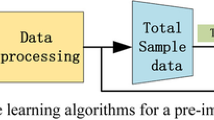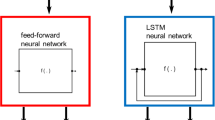Abstract
With the rapid development of wearable technology, wearable medical devices have gradually garnered a significant amount of research interest. Motion reconstruction can accurately reproduce the posture of the user at the time of the accident, which provides medical personnel with necessary reference information. However, because of the vast range of human body activities, motion reconstruction needs high-frequency sampling data to avoid the occurrence of errors. Moreover, the fact that movements resulting from an accident can be irregular, the difficulties arising from unexpected training samples. This study attempts to establish a real-time human body inferential motion reconstruction system on fall accident. The data of human motion is recorded by using tri-axis accelerometers and tri-axis gyroscopes. The angles and tracks of the human limbs computed, and the next action occurrence point deduced using long short-term memory. Then the postural trajectory is corrected using feedback inference of gravity data from the end of a fall accident. Through the correction mechanism of bidirectional feedback, the error diffusion caused can reduce efficiency. In this study, using a parameter adjustment strategy under data sampling rate of 0.01 s, the average normal-m reconstruction rate, as well as the fall-motion reconstruction rate, can be determined. The overall posture is reproduced through the 3D video to ambulance personnel as a reference.













Similar content being viewed by others
References
Fonad, E., Wahlin, T. B., Winblad, B., Emami, A., & Sandmark, H. (2008). Falls and fall risk among nursing home residents. Journal of Clinical Nursing, 17(1), 126–134.
Laessoe, U., Hoeck, H. C., Simonsen, O., Sinkjaer, T., & Voigt, M. (2007). Fall risk in an active elderly population-can it be assessed? Jounal of Negative Results in Biomedicine, 6, 2–13.
Krizhevsky, A., Sutskever, I., & Hinton, G. E. (2012). Imagenet classification with deep convolutional neural networks. In Advances in neural information processing systems 25.
Hochreiter, S., & Schmidhuber, J. (1997). Long short-term memory. Neural Computation, 9(8), 1735–1780.
Sposaro, F., & Tyson, G. (2009). iFall: An android application for fall monitoring and response. In Proceeding of annual international conference of the IEEE engineering in medicine and biology society, Minneapolis, USA
Nyana, M. N., Taya, Francis E. H., & Murugasuc, E. (2008). A wearable system for pre-impact fall detection. Journal of Biomechanics, 41(16), 3475481.
Dai, J., Bai, X., Yang, Z., Shen, Z., & Xuan, D. (2010). PerFallD: A pervasive fall detection system using mobile phones. In Proceeding of 8th IEEE international conference on pervasive computing and communications workshops, Mannheim Germany.
Lin, C. S., Hsu, H. C., Chiu, C. C., Lin, S. L., & Chao, C. S. (2006). A PDA based wearable system for real-time monitoring of human falls. IETE Journal of Research, 52(6), 403–416.
Lindemann, U., Hock, A., & Stuber, M. (2005). Evaluation of a fall detector based on accelerometers: A pilot study. Medical & Biological Engineering & Computing, 43(5), 548–551.
Yang, C. C., & Hsu, Y. L. (2006). Development of a portable system for physical activity assessment in a home environment. In Proceeding of international computer symposium (pp. 1339–1344), Taipei, Taiwan.
Wang, C. C., Chiang, C. Y., Lin, P. Y., Chou, Y. C., Kuo, I.-T., Huang, C. N., & Chan, C. T. (2008) Development of a fall detecting system for the elderly residents. In Proceeding of the 2nd international conference on bioinformatics and biomedical engineering (pp. 1359–1362), Shanghai, China
Delahoz, Y. S., & Labrador, M. A. (2014). Survey on fall detection and fall prevention using wearable and external sensors. Sensors, 14(10), 19806–19842.
Shi, Y., Shi, Y. C., & Wang, X. (2012). Fall detection on mobile phones using features from a five-phase model. In Proceeding of 9th International Conference on Ubiquitous Intelligence and Computing and Autonomic and Trusted Computing (pp. 951–956), Fukuoka, Japan
Sengto, A., & Leauhatong, T. (2012). Human falling detection algorithm using back propagation neural network. In Proceeding of 5th Biomedical Engineering International Conference (pp. 1–5). Thailand: Ubon Ratchathani.
Zhang, C., Lai, C. F., Lai, Y. H., Wu, Z. W., & Chao, H. C. (2017). An inferential real-time falling posture reconstruction for Internet of healthcare things. Journal of Network and Computer Applications, 89, 86–95.
Chiang, J. C. (2009). Adaptive collaborative multi-sensor devices to detect body position. Master’s Thesis of Department of Engineering Sciences, National Cheng Kung University.
Graves, A., & Schmidhuber, J. (2009). Offline handwriting recognition with multidimensional recurrent neural networks. In Advances in neural information processing systems (pp. 1–8)
Graves, A., Mohamed, A.-R., & Hinton, G. (2013). Speech recognition with deep recurrent neural networks. In Proceeding of IEEE International Conference on Acoustics, Speech and Signal Processing (pp. 6645–6649), Vancouver, BC, Canada, May 2013.
Zhou, C., Sun, C., Liu, Z., & Lau, F. (2015). A C-LSTM neural network for text classification. arXiv:1511.08630v2
Chen, Y., Cheng, B., & Cheng, X. (2016). Food safety document classification using LSTM-based ensemble learning. Revista Técnica de la Facultad de Ingeniería Universidad del Zulia, 39(10), 172–178.
Rubinstein, R. Y., & Kroese, D. P. (2004). The cross-entropy method: A unified approach to combinatorial optimization, Monte-Carlo simulation, and machine learning. New York: Springer.
Bottou, L. (2010). Large-scale machine learning with stochastic gradient descent. In Proceedings of COMPSTAT’2010 (pp. 177–186). New York: Springer.
Ruder, S. (2016). An overview of gradient descent optimization algorithms. CoRR arXiv:1609.04747
Riedmiller, M., Braun, H. (1992). RPROP-A fast adaptive learning algorithm. In Proceedings of the ISCIS VII, Universitat.
Srivastava, N., Hinton, G., Krizhevsky, A., Sutskever, I., & Salakhutdinov, R. (2014). Dropout: A simple way to prevent neural networks from overfitting. Journal of Machine Learning Research, 15(1), 1929–1958.
Jian G., & Stephen G. (2016). Depth Dropout: Efficient Training of Residual Convolutional Neural Networks. In Proceeding of 2016 International Conference on Digital Image Computing: Techniques and Applications (pp. 1–7). Gold Coast, QLD, Australia, Dec.
Hecht-Nielsen, R. (1988). Theory of the backpropagation neural network. Neural Networks, 1, 445.
Acknowledgements
Funding was provided by Ministry of Science and Technology, Taiwan (Grant Number 106-2511-S-025-003-MY3).
Author information
Authors and Affiliations
Corresponding author
Rights and permissions
About this article
Cite this article
Chang, YC., Lai, Y.H. & Huang, TC. Inferential Motion Reconstruction of Fall Accident Based on LSTM Neural Network. J. Med. Biol. Eng. 39, 315–328 (2019). https://doi.org/10.1007/s40846-018-0401-2
Received:
Accepted:
Published:
Issue Date:
DOI: https://doi.org/10.1007/s40846-018-0401-2




